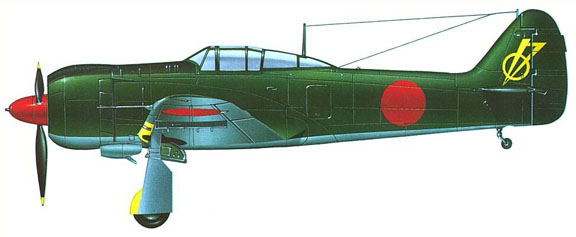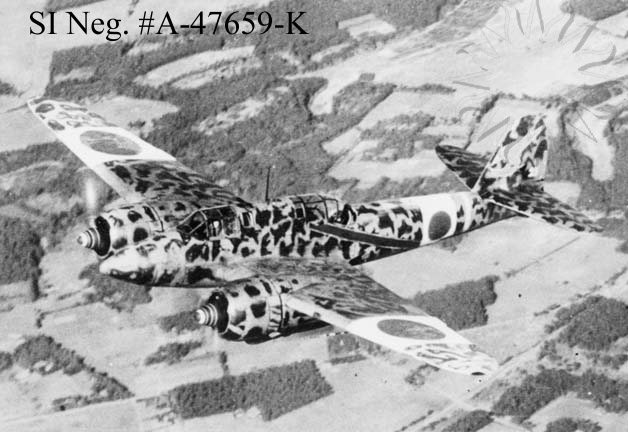From a USN "biased" viewpoint I think I get killed more by Niki's than just about anything else but I truly suck so I get killed alot. Mainly because I go hunting for them when I see them pop up in an area while I am cruising in my F4U-1. While its true that we do hold a speed advantage over them at a wide range of altitudes. We also can't turn with them for more than a break turn at best and that is something I avoid like the plague if I can help it. As for the FM-2 being an upsetter in the balance I can see it based entirely on the FM-2 coming into a fight when the Niki is already engaged hot and heavy with some other plane and therefore would cause much wailing and gnashing of teeth on the BBS.
But I for one am a devout believer that the Ki-84 will help out the IJ plane set but I also would
LOVE to see the Ki-100 make a low perk (8-15 simply because of numbers built) appearance in the planeset. When I played FA a good bit I would break out of my GE only role to fly the Ki-100 in there because it was a hell of a ride. You could give Spit 14's fits in that game with it. I also would like to see a Ki-102 make an appearance in the game. Also as a low perk plane 8-15 poiints. Iit might be a first for any flight sim past or present.

(Don't know why the image doesn't show but you do get sent to it.)
Type: Close Support Aircraft
Origin: Kawasaki
Crew: Two
Allied Code Name: Randy
Models: Ki 102 A, b, c & Ki-108
First Flight: 1944
Service Delivery: N/A
Final Delivery: N/A
Production: N/A
Powerplant:
Ki-102b:
Model: Mitsubishi Ha-112-II
Type: Radial
Number: One Horsepower: 1,500 hp
Dimensions:
Wing Span: 51 ft. 1 in. (15.57m)
Length: 37 ft. 6¾ in. (11.45m)
Height: 12 ft. 1¾ in. (3.70m)
Wing Area: 365.98 sq. ft. (34.00m²)
Weights: Ki-48-IIb
Empty: 10,913 lb. (4950 kg.)
Loaded: 16,094 lb. (7300 kg.)
Performance: Ki-48-IIb
Max. Speed: 360 mph (580 kph) at 19,685 ft.
Service Ceiling: 36,090 ft. (11,000m)
Range: 2000 km
Armament:
Ki-102a: One 37mm Ho-203 cannon and two 20mm Ho-5 cannon.
Ki-102b: One 57mm Ho-401 cannon, two 20mm Ho-5 cannon, and one rear firing 12.7mm Ho-103 (Type 1) machine gun.
Ki-102c: Two 30mm Ho-105 cannon and two 20mm Ho-5 cannon.
Payload: All variants
Two drop-tanks or two 551 lb. (250 kg) bombs.
Variants:
Ki-102: Three prototypes and 20 pre-production aircraft.
Ki-102a: High-altitude fighter version. Converted from six pre-production aircraft.
Ki-102b: Ground attack version.
Ki-102c: Proposed night-fighter version with increased wing span, lengthened fuselage, revised tail surfaces, and primative AI radar. Only two built.
Ki-108: Two protoptypes built from Ki-102b airframes. Developed as a high altitude fighter with pressurised cabin. These included the structural improvements of the Ki-102c and were still in the testing stages at wars end.

Type: Interceptor Fighter
Origin: Kawasaki
Crew: One
Allied Code Name: N/A
Models: Ki-100-1a/b
First Flight: February 1945
Service Delivery: N/A
Final Delivery: N/A
Production: 374 (275 Ki-100-1a & 99 Ki-100-1b)
Powerplant:
Ki-100-1a/b
Model: Mitsubishi Ha-112-II
Type: Radial piston
Number: One Horsepower: 1,500 hp
Dimensions:
Wing Span: 39 ft. 4½ in. (12.00m)
Length: 28 ft. 10½ in. (8.80m)
Height: 12 ft. 3½ in. (3.75m)
Wing Area: 215.29 sq. ft. (20.00m²)
Weights:
Empty: 5,952 lb. (2700 kg.)
Loaded: 8,091 lb. (3670 kg.)
Performance:
Max. Speed: 367 mph (590 kph) at 32,810 ft.
Service Ceiling: 35,005 ft. (10,670m)
Range: 1,243 miles (2000 km)
Armament:
Two 12.7mm Ho-103 (Type 1) machine guns in fuselage.
Two 20mm Ho-5 cannon in wings.
Payload:
Drop tanks or two 551 lb. (250-kg) of bombs.
Also would like to see a Ki45 as well.

Type:
Long Range Escort, Nightfighter, Ground Attack
Origin: Kawasaki
Allied Code Name: Nick
First Flight: September 1941
Service Delivery: N/A
Final Delivery: N/A
Number Produced: 1,698
Engine:
Model: Mitsubishi Ha-102 (Type 1)
Type: 14-Cyl. Twin Radial
Number: Two Horsepower: 975 hp
Fuel:
Capacity: N/A
Type: N/A
Dimensions:
Wing span: 49 ft. 3½ in. (15.02m)
Length (Ki-45 Kai C): 36 ft. 1 in. (11m)
Height: 12 ft. 1.55 in. (3.7m)
Wing Surface Area: 344.46 sq. ft. (32.00m²)
Weights:
Empty (Ki 45 Kai A): 8,340 lbs. (3790 kg)
Empty (Ki 45 Kai C): 8,820 lbs. (4000 kg)
Loaded (All): 12,125 lbs. (5500 kg) Performance:
Maximum Speed: 336 mph (540 km/h)
Initial climb: 2,300 ft./min (700 m/min)
Service Ceiling: 32,800 ft. (10,000m)
Range (Unconfirmed): 1,243 Miles (2000 km)
Armament:
Ki-45-I and Kai-A:
Two 12.7mm machine guns fixed in nose
Two 7.7mm machine guns manually aimed from rear cockpit
Kai-B:
Two 12.7mm machine guns fixed in nose
Two 7.7mm machine guns manually aimed from rear cockpit
One 37mm Cannon in lower right forward fuselage
–Often with only one 12.7mm machine gun
Kai-C (Night Fighter):
Two 12.7mm machine guns mounted at 30° between cockpits
Two 12.7mm machine guns mounted in nose
One 20mm or 37mm Cannon in lower right forward fuselage
Anti-Shipping Variant (Unconfirmed):
One 50mm or 75mm cannon under nose
Two 551 lb (250kg) bombs under wings
Yes Karnak, I do want to recreate the Battle of the Phillipine Sea (June 19th, 1944) but I think it can be done in a way that will allow the IJN and IJAAF to have a very good chance at getting the job done. You should read up on it a little bit and see that it was primarily the result of inexperience of the IJN/IJAAF aviators that caused the battle to end up the way it did.